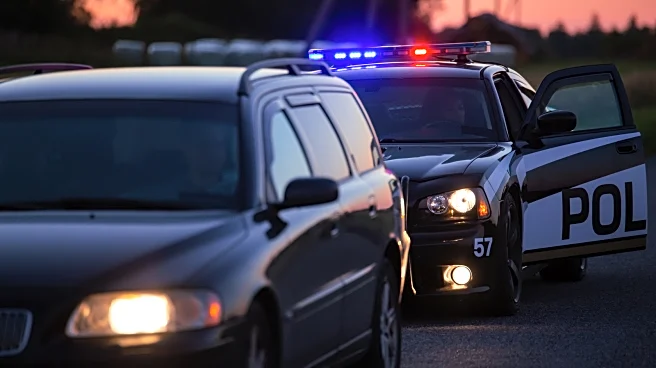
Every car enthusiast has been there. You've just installed that perfect car mod, and suddenly, you're getting pulled over more than ever. The relationship between car mods and police attention is as predictable as gravity. Certain mods are guaranteed to turn your daily commute into a game of cat and mouse. While a lot of the modifications on this list are very popular, drivers fail to realize that some of them aren't only traffic-stop magnets but actually illegal in most states. The problem isn't
that some disgruntled police officers have a bone to pick with modified cars. Rather, more often than not, these attention-grabbing mods violate specific vehicle codes or cause a hazard in terms of safety -- oftentimes both.
Knowing which modifications get the attention of five-oh can potentially save you hundreds of dollars in tickets. Also, depending on several factors, these borderline brazen additions to your car can result in hefty fines, vehicle impoundment, or even more serious charges. We do ask readers to note that a great many of these modifications are perfectly legal when used in appropriate contexts; off-road, on private property, or at sanctioned events. It's when they hit public roads that problems arise. Here are 13 features sure to get the attention of traffic enforcement.
Read more: 9 Cheap Cars That Look Expensive
Excessively Dark Window Tinting
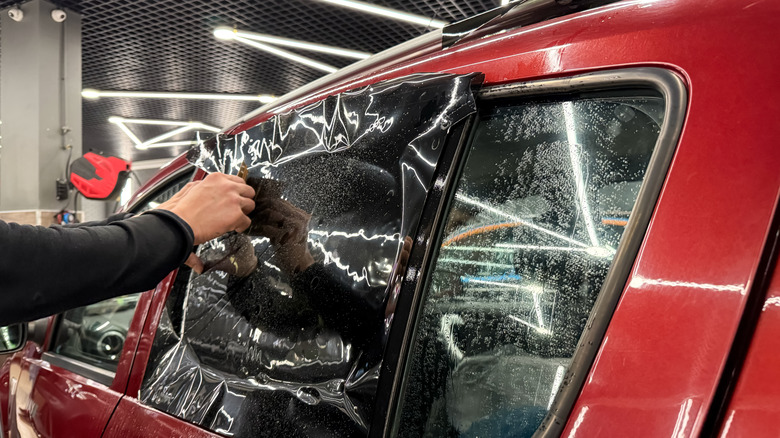
Window tinting is a necessity in many parts of our country, as it is one of the cheapest (and best) ways to keep your car cool in the summer. It refers to the act of putting a protective film, which can be added to basically all glass surfaces in the vehicle, in order to keep a certain amount of light out. The main reason why excessive tinting is banned has to do with safety, as it impairs the driver's view, especially at night. It can also (in some cases) prevent law enforcement from ID-ing drivers in footage. Many people do not realize that the number that accompanies window tints as a percentage actually refers to the amount of light that the tint allows to pass through -- known as visible light transmission, or VLT.
A 40% tint will allow 40% of visible light to pass through the protective film, whereas many people incorrectly assume that it means 40% of light will be blocked. A major problem arises because virtually every state has its own laws pertaining to the amount of tint allowed. Some states are uber-strict with tinting laws, such as New Hampshire, where absolutely no tint is allowed on the main windscreen. Readers are advised to confirm their local regulations, but, for the most part, the limit is about 35%VLT, with exceptions.
Obscured Number Plates

This one should be obvious, but with more than 100,000 drivers getting ticketed for obscuring their plates each year, it isn't. Some people make genuine mistakes, such as a bumper sticker encroaching on the plate, while others do it deliberately, by using things like special reflective tape to hide the plate from cameras. Either way, adding any kind of feature, gadget, or gizmo, such as a fancy license plate frame that obscures the number plate on the vehicle, is probably illegal.
This includes partial obscurity, where the letter or number can still be clearly visible. Now, drivers may be able to argue their way out of such a situation, claiming that the overall plate code was still readable, but why would anyone want that headache and needless running around? Readers should also note that a judgment in New Jersey was upheld in 2021, which prevents police from stopping vehicles with obscured number plates if the markings are still clearly visible. This is not a free pass to use a license plate flipper, but it could make police officers think twice before pulling drivers over for a sticker that encroaches a centimeter on top of the plate. All in all, it's a hassle that can easily be avoided.
Underglow
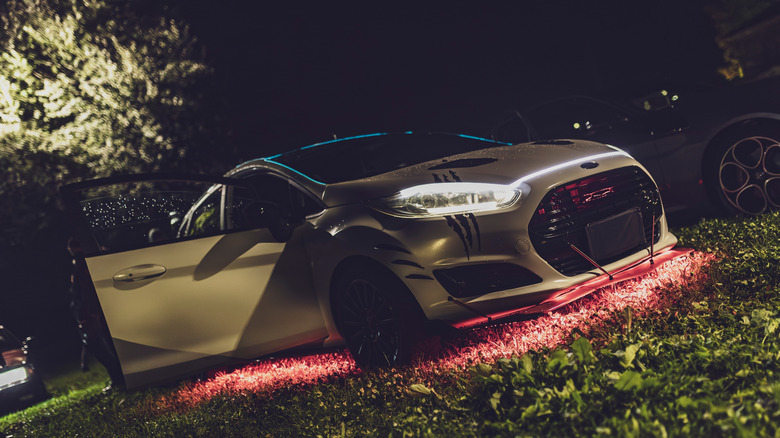
Underglow refers to colored neon lights that are installed on the underbody of a car, which produce a bright glow. More often than not, underglow lighting systems will use light-emitting diodes, or LEDs, to get the desired effect, which are often very powerful. The main aim is to give cars the appearance of floating and to improve the overall aesthetics. Oftentimes, underglow systems will be able to produce different light effects, such as flashing, alternating colors, and strobing, among other things. While undoubtedly cool-looking, these systems can attract the police to your car like moths to a flame. Just as with window tinting, each state will have a different level of underglow that is permitted.
These laws can also vary from district to district, so readers are cautioned to confirm local regulations with the closest DMV or highway patrol before attempting any modification. At the time of writing, underglow is explicitly legal only in California, Idaho, Montana, Kansas, Arkansas, and Ohio. A further 10 states outright ban underglow unless on private property, and the remaining 34 states have varying regulations, many of which restrict certain things, such as the fact that no red light can be visible on the front of the car, or no blue lights allowed to prevent confusion with emergency vehicles (more on that later). Many states prohibit the use of underglow systems on public roads.
Rock Lights / Light Bars
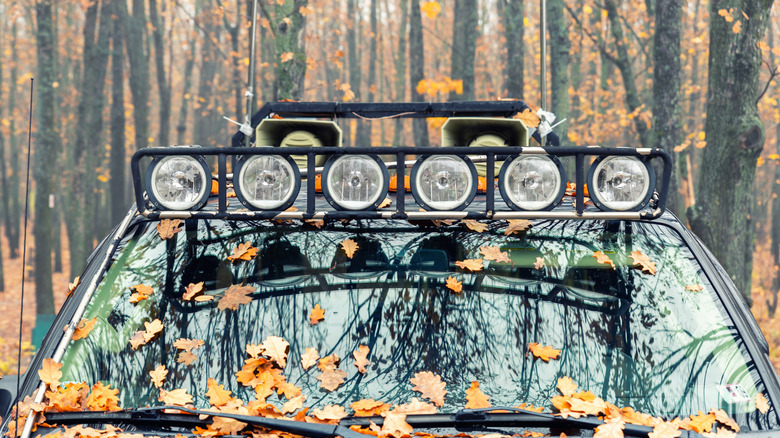
Rock lights are light accessories meant specifically for off-roading and are mounted inside the wheel arch of a vehicle in order to light up the ground underneath. Light bars refer to the auxiliary lights mounted on top or at the side of a vehicle for much the same purpose. Often, these take the form of several, powerful light units mounted to a single strip of metal, which is why they are called light bars. Many of the same laws that govern underglow will also apply specifically to rock lights, though light bars have some laws of their own.
Using these auxiliary (secondary) light systems is permitted -- and even recommended alongside some other off-roading modifications -- as there might not be adequate lighting for those adventures, but use on the road is asking to be pulled over. Rock lights are allowed in most states, but not on public roads, and they cannot be red or blue. As far as light bars go, using them on the road is illegal in pretty much every state, as the brightness could blind oncoming drivers. To avoid cases of road rage and to further enforce this on-road ban, users are often required (by law) to have a light-bar cover installed when the unit is not in use.
Red, Blue, Or Alternating Lights

Once again, there is significant overlap between the laws that govern this modification, underglow, and the rock lights we covered above. For the most part, any light other than white (or yellow, for older vehicles) that is visible on the front of your car is illegal. This applies, of course, only to civilian vehicles. The reason, rather obviously, is that civilian vehicles that are equipped with red or blue lights may be confused with emergency vehicles, which would defeat the purpose of the emergency vehicles having these lights in the first place.
It is not just red and blue lights that are scrutinized by the police. Having purple, amber, green, or orange lights on a civilian car can also be cause enough to get pulled over. However, there is nuance to this. For instance, green lights are mainly illegal when they can be seen on the front of the vehicle. Additionally, most states impose the requirement that the lights that illuminate the license plate must always be a dull white color. The specific law that governs this matter is the Federal Motor Vehicle Safety Standard number 108, or FMVSS 108 for short.
Loud Aftermarket Exhaust Systems
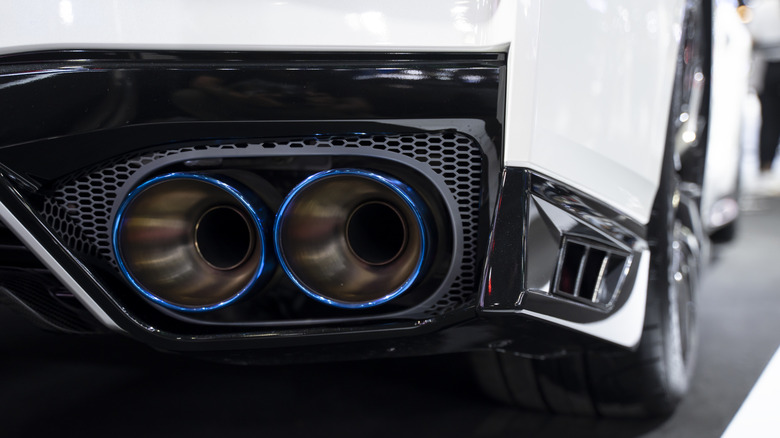
Exhaust modifications are an iffy topic. Many times, the exhaust system will be upgraded as part of a larger project to increase vehicle performance. To that end, readers may be surprised to learn that several high-end workshops have popped up that specialize in exhaust modification (among other things). However, if the exhaust system has an output that is louder than a certain limit, it could be deemed illegal and attract the attention of the police.
Excessively loud exhaust systems can also be ticketed for being a public nuisance and disturbance to the peace, especially if pulled over in a residential area or near public infrastructure like a school or hospital. While rules vary by state and city, for the most part, the legal limit lies somewhere around the 80to 100 decibel mark. This is also left open to interpretation by the officer on duty. For instance, in 2024, a man driving a fully stock Lamborghini Huracan was pulled over for an excessively loud exhaust note. His car was not modified, but the ticket was upheld. That's why, even if cars do have a modified exhaust, it might behoove drivers to keep a light foot on the pedal.
Removing The Catalytic Converter
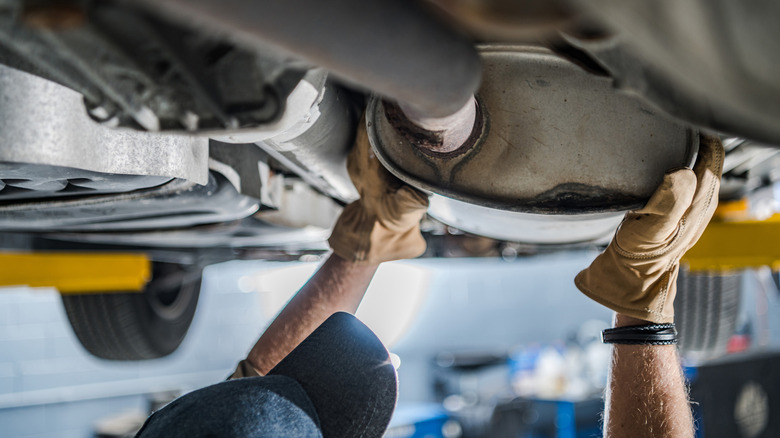
Removing the catalytic converter on a car is plain illegal in every single state. Federal law prohibits driving a vehicle that came equipped with a catalytic converter without one. A cat delete, or straight pipe, as the move is known, creates a very loud noise. This is because the catalytic converter is usually located between the engine and the muffler housing. It is a kind of last resort that aims to clean the exhaust gas that leaves the tailpipe by passing it through a particular catalyst. This catalyst captures a lot of harmful emissions by way of chemical reaction, which is why it is an important piece of equipment that cars need to pass their emissions tests.
The main purpose of straight piping a car is to remove the back-pressure that builds up in the exhaust system, which, while loud, would also marginally increase the engine power. So, removing the cat converter will get drivers in two-fold trouble, first for the noise, and then for violating EPA mandates alongside the Federal Clean Air Act of 1990. Under this act, removing the catalytic converter will carry a fine of several thousand dollars, and repeat offenses would carry graver punishments.
Radar Detectors
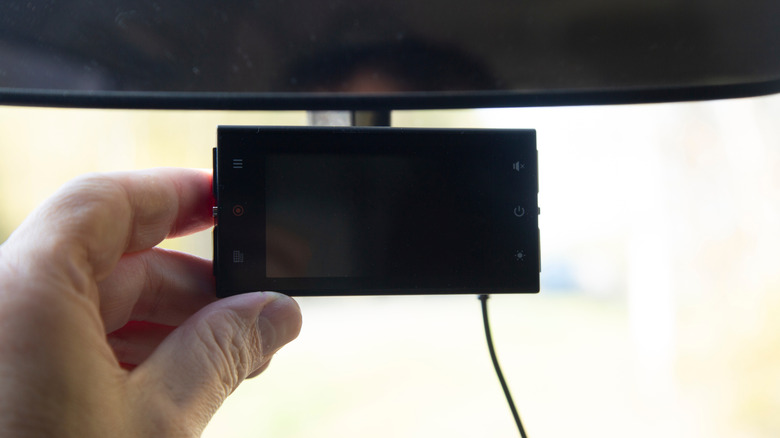
Radar detectors are devices that intercept the signals from radio speed guns that police officers carry, either on their person or attached to their police vehicle. These radio speed guns work by bouncing a signal back and forth between the gun and the target vehicle several times, and by measuring the time between each signal's return. Based on this, the police officer can determine the speed of the target vehicle, and, where warranted, issue a fine. A radar detector would allow the driver of the target vehicle to know that a radar speed gun is targeting his or her vehicle, thus allowing the driver to reduce their speed and avoid a fine. When the radar detector alerts them that the speed gun is no longer tracking their vehicle, they could then speed up again.
To that end, radar detectors are officially illegal only in two places: Virginia and Washington, D.C. In other states, laws vary. Some states openly allow radar detectors for vehicles under a certain weight, such as the 10,000-pound gross vehicle weight rating in Kansas. Other states allow the use of radar detectors, but ban them in commercial vehicles or regulate where they can be placed.
Squatted Suspensions
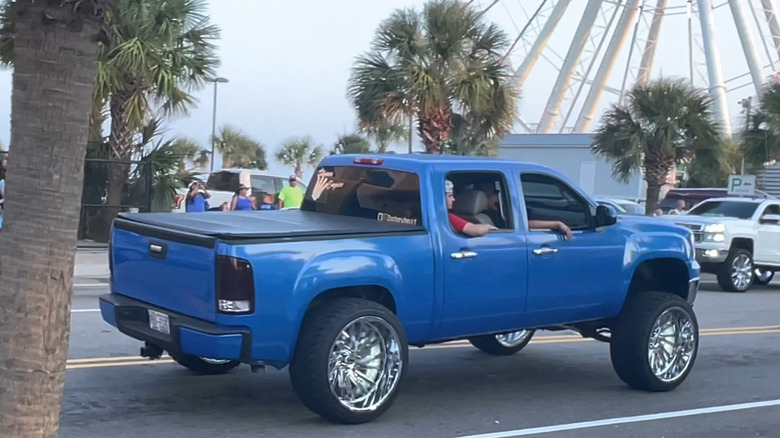
Squatting refers to the practice of raising the front suspension on a vehicle while simultaneously lowering the rear suspension, giving the impression that the vehicle is squatting. Known as the Carolina Squat, this modification is, ironically enough, illegal in both North and South Carolina and Virginia to boot. The main motivation behind outfitting a vehicle with a squatted suspension would be to alter the aesthetics of the car or truck, as there is no performance benefit to doing so. According to authorities, the Carolina squat poses several safety risks to both vehicle passengers and people outside.
Risks of the Carolina squat include visibility issues, wherein the driver's view may be obstructed because of the excessive front lift, an increased chance of rolling over, issues with crumple zones in the case of an accident, and the possibility of crashing. This led to both Carolinas outlawing this particular style. Virginia also banned it afterwards, with Governor Glenn Youngkin nursing a bill through local parliament in 2022, following a tragic accident that cost a 27-year-old man his life, after a 19-year-old driving a squatted truck crashed into him.
Lift Kits
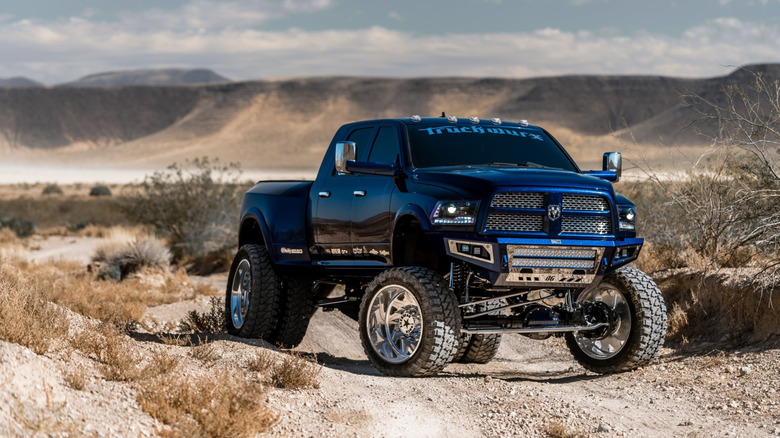
Lift kits are exactly what they sound like. They lift a truck by increasing the ride height. The main methods are inserting aftermarket spacers or using larger coilover suspension units. A key factor that very few people consider when they go about lifting their vehicles is the impact that this has on braking. From the factory, brakes are designed to stop a car at a certain height, with a predetermined center of gravity. Installing a lift kit throws those calculations out of the window, making it unsafe.
The problem compounds when you consider that several, if not most, new vehicles that hit the road now come with anti-lock braking systems that would cause further stress to the vehicle, resulting in a higher crash probability. Larger tires and wheels can also contribute to handling or braking changes. All of these are reasons the police frequently work to enforce restrictions on lift kits, thus attracting them to your vehicle.
While popular on cars too, lift kits are mainly found on pickup trucks and SUVs in the U.S., leading to more problems as these vehicles have more mass and tend to do more damage in an accident than lighter or smaller vehicles. Readers are encouraged to confirm their particular lift kit restrictions with the local DMV, as different states base their laws on different parameters. Alabama bases its laws on the heights of reflectors, Alaska on the vehicle's headlamps, and other states base it on the bumper height.
Non-Standard Horns

While having a horn that moos or whistles is undoubtedly quirky and funny, it's actually illegal in many U.S. states. For example, the state of Florida, through statute 316.271, explicitly prohibits modifying horns to be anything other than a honk. Other states also list it as a class-two misdemeanor. This includes anything resembling a whistle or anything that does not produce, as South Dakota puts it, a "harmonious sound." At the same time, some cars, like certain Tesla models, allow the driver to upload their own audio file to be used when they honk the horn. A corollary to this fact is also that any civilian vehicle found to have sirens will be hunted down and ticketed, for obvious reasons.
Unlike exhaust systems that can land you in trouble only for being too loud, horns cut both ways. Drivers can be cited for not having a horn that is loud enough (one that cannot be heard 100 to 500 feet away, in most cases) as well as having one that is too loud, for the same disturbing the peace and creating a nuisance reasons that we've covered above. The logic behind this is that modified horns might not serve to get other drivers' attention on the road if the horn doesn't sound like a horn, and thus, it might not alert them to your presence or to any other danger, which is the primary purpose of the horn.
NOS Or Nitrous Oxide Injection Systems
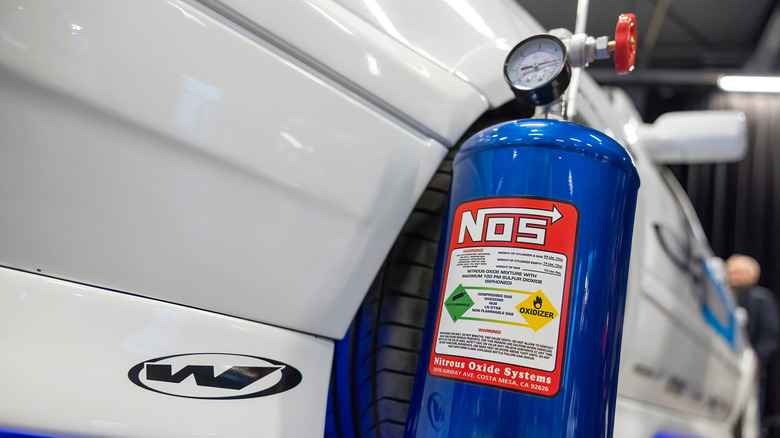
Anyone who's watched a film from the "Fast and Furious" franchise knows that nitrous oxide, or NOS injection systems, make even slow cars go very fast. However, what many people do not realize is that such systems are also very illegal in many states. Possession of the gas or liquid itself is legal, but its use is regulated. While this mod can be used on non-public roads, such as drag strips or racing tracks, using it on city streets or highways is a recipe for trouble.
Potential violations include being ticketed for reckless endangerment, dangerous driving, distracted driving, and whatever else the copper who pulled you over can dream up. It is not a stretch to imagine being pulled over in a fast car with a NOS system, and the police officer believing that the driver used the system, even if they didn't.
That's why it's always best to disassemble the NOS system or remove the tanks when driving on a public road for your own safety, as well as that of other road users. Not to mention, it's harder to get a ticket for something that isn't installed. However, some states, like California, make it illegal to install or even transport NOS injection systems without certification from relevant environmental protection authorities. As always, do your due diligence if planning to install one of these in your pride and joy, lest it sees some time inside an impounded lot.
Loud Speaker Systems
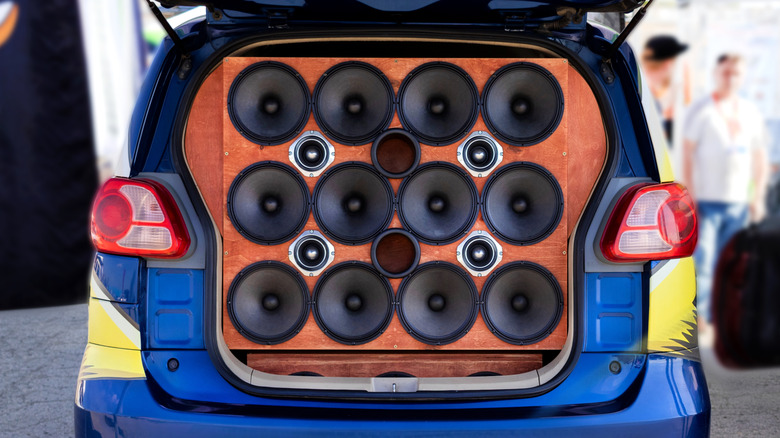
The last modification on our list is your speaker system -- including the stock one. Even playing your car's stock audio unit too loudly can cause trouble with the police. The safety theory is that if the music is too loud, drivers can miss emergency sirens or honks from other drivers. Each state defines it differently. Oregon, for instance, says that if you can hear the radio 50 feet from the car, the policeman can give you a ticket. Furthermore, many modders like to equip their vehicles with more powerful, aftermarket radio and speaker systems.
While perfectly legal, if the music played through these systems is too loud, drivers are risking a ticket. Multiple offenses may lead the local P.D. to pursue more serious charges, such as creating a public nuisance, disturbing the peace, or filing noise complaints. There are plenty of ways to attract unwanted attention in your car, and the stereo system is one -- though at least it's not as dangerous as squatting a vehicle.
Want the latest in tech and auto trends? Subscribe to our free newsletter for the latest headlines, expert guides, and how-to tips, one email at a time.
Read the original article on SlashGear.
